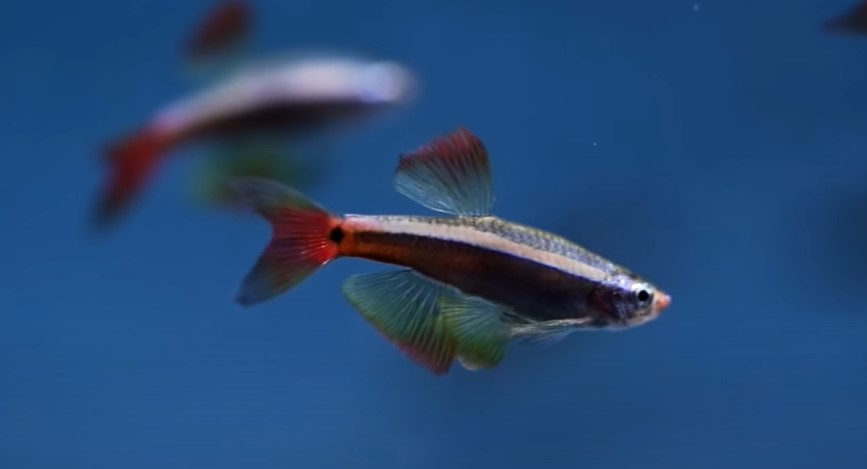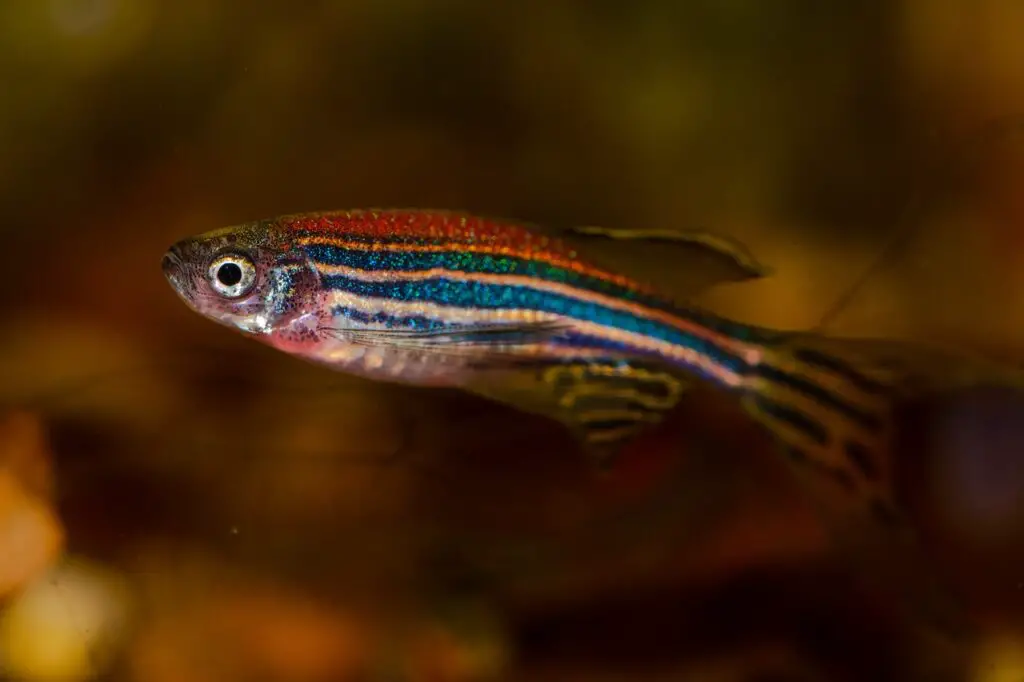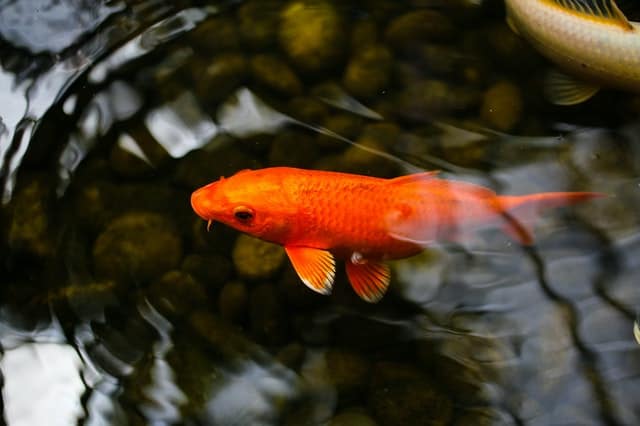Minnows are a diverse and fascinating group of fish in the Cyprinidae family. They play essential roles in the ecosystem, and humans often interact with these small fish as bait for larger catches or as pets in aquariums. In this article, we will explore the different aspects of minnow lifespans, from their diet and habitats to their reproduction and conservation. Whether you’re an angler looking for the perfect bait or an aquarium enthusiast interested in adding minnows to your tank, this comprehensive guide will provide helpful insights and tips.
Minnows live between 2 and 4 years on average; their lifespans vary greatly depending on the species and environmental conditions. They can live from a few months to several years, with captive minnows generally having longer lifespans than their wild counterparts.
- Types of Minnows and Their Habitats
- Minnow Diet and Role in the Ecosystem
- Mating, Reproduction, and Life Cycle of Minnows
- Factors Influencing Minnow Lifespan
- Keeping Minnows as Pets
- Using Minnows as Bait for Fishing
- Minnow Conservation and Management
- Frequently Asked Questions about Minnow Lifespan
- Conclusion
Types of Minnows and Their Habitats
Minnows are a varied group, with over 2,000 species distributed globally. Some common minnow species include:
- Stone roller minnows
- Fathead minnows
- Chubs
- Fallfish
- Carp
- Shiners
- Daces
- Bluntnose minnow
- Mosquitofish
- Common shiner
- Emerald shiner
- Golden shiner
- Goldfish
These fish can be found in many freshwater habitats, such as creeks, ponds, and rivers. Some species are more adaptable to various water conditions, while others may have specific habitat requirements. For example, the bluntnose minnow prefers slow-moving waters with a sandy or muddy bottom, while the emerald shiner thrives in large rivers with strong currents.
| Minnow Species | Preferred Habitat |
|---|---|
| Fathead minnow | Ponds, small lakes, calm river areas |
| Stone roller minnow | Clear streams with rocky bottoms |
| Bluntnose minnow | Streams, rivers, lakes |
| Emerald shiner | Large rivers, lakes |
| Golden shiner | Ponds, lakes, slow-moving streams |

Minnow Diet and Role in the Ecosystem
Minnows have diverse feeding habits depending on their species and size. Their diet includes:
- Phytoplankton
- Small insects and larvae
- Algae
- Detritus (decaying organic matter)
As primary and secondary consumers, minnows play a crucial role in the food chain. They help control algae and insect populations while serving as a food source for larger fish, birds, and other predators. In addition, minnows can influence water quality by consuming excess nutrients and promoting the growth of aquatic plants.
They also help improve water quality by consuming algae and decaying organic material, which can decrease ammonia and nitrite levels. This, in turn, promotes the growth of aquatic plants, providing shelter and food for other ecosystem inhabitants.
Mating, Reproduction, and Life Cycle of Minnows
Depending on the species, minnows exhibit a wide range of mating behaviors and strategies. Most minnows are egg-layers, but some, like the Mosquitofish, give live birth. Male minnows often develop bright colors and patterns during breeding to attract females.
Fertilization usually occurs externally, with the female releasing her eggs and the male releasing sperm into the water. The eggs then attach to aquatic vegetation, rocks, or other surfaces. The number of eggs can range from a few dozen to several thousand, depending on the species.
Depending on their species, minnows exhibit various mating behaviors and strategies. Some common reproductive characteristics among minnows include:
- Spawning: Most minnow species lay eggs, which are then fertilized externally. Males often guard the nest to protect the eggs from predators.
- Schooling: Some minnows, such as the golden shiner, form large schools during the spawning season to increase their chances of successful fertilization.
- Live-bearing: A few species, like the mosquitofish, give birth to live young instead of laying eggs.
Factors affecting minnow reproduction include water temperature, habitat conditions, and suitable nesting sites. The minnow life cycle can be divided into four stages:
- Egg
- Larvae
- Juvenile
- Adult
Minnows generally reach sexual maturity within a few months to a year, allowing them to reproduce relatively quickly. This short maturation period is essential for maintaining their populations in the face of predation and other threats.

Factors Influencing Minnow Lifespan
Minnow lifespans can vary greatly depending on the species and environmental conditions. Wild minnows typically have shorter lifespans due to predation, competition, and other natural factors. Captive minnows, on the other hand, may live longer in well-maintained aquariums with proper care.
Some factors that influence minnow lifespan include:
- Water quality: Poor water quality can lead to stress, disease, and reduced lifespan in minnows. Regular water changes, filtration, and water conditioners like Ammo-Lock can help maintain a healthy environment for these fish.
- Water temperature: Minnows are generally more comfortable in cooler water (50-70°F). Prolonged exposure to high temperatures can stress the fish and shorten their lifespan.
- Disease and parasites: Regular tank cleaning and quarantine of new fish can help prevent the spread of illness in your aquarium.
- Species: Some species of minnows naturally have longer lifespans than others. For example, the Fathead minnow typically lives for 1-3 years, while the Golden shiner can live up to 5 years.
- Environment: Wild minnows often have shorter lifespans than those kept in captivity, where they are protected from predators and have access to a consistent food supply.
- Predation and competition: Minnows face numerous predators in the wild, including birds, larger fish, and even other minnow species. They also compete with other fish for food and resources, affecting their overall survival rates.
Keeping Minnows as Pets
Minnows can make wonderful pets for aquarium enthusiasts. With their small size and active nature, they can be fascinating to watch as they swim and interact with one another. To ensure a healthy and happy life for your pet minnows, consider the following tips:
- Choose the right species: Some minnow species are more suitable for aquarium life than others. Popular choices include tetras, mollies, and goldfish.
- Proper tank setup: A well-maintained aquarium is essential for minnow health. Ensure the tank has adequate filtration, aeration (such as a Pulaco Ultra Quiet Aquarium Air Pump), and appropriate water temperature.
- Tank environment: Minnows prefer a natural environment with hiding spots and vegetation. Add rocks, driftwood, and live plants to create a comfortable space for your fish.
- Aquarium lighting: Use an Aquanet LED Aquarium Light or a similar product to provide the right light for your minnows and promote plant growth.
- Tank Size: Choose a tank size appropriate for the species and number of minnows you plan to keep. A 10-20 gallon tank is suitable for most small minnow species.
- Balanced diet: A combination of high-quality fish food, live bait (such as brine shrimp), and occasional plant matter will help ensure your minnows receive proper nutrition.
- Compatible tank mates: Minnows generally coexist well with other peaceful, similarly sized fish like angelfish, tetras, and mollies.
- Water quality: Maintain a consistent water temperature (usually between 65-75°F) and pH level (around 6.5-7.5) suitable for the specific minnow species.
- Adequate filtration: Use a high-quality filter to maintain good water quality and an aerator to oxygenate the water.
Using Minnows as Bait for Fishing
Minnows are popular for live bait because they are readily available, inexpensive, and effective at attracting various fish species. Some recommended minnow species for use as bait include:
- Fathead minnows: Great for catching bass, catfish, and walleye
- Emerald shiners: Preferred by many anglers for catching trout and salmon
- Golden shiners: Effective for catching larger game fish, such as bass and pike
To properly store and care for your bait minnows:
- Please keep them in a bait bucket or insulated container with a lid to prevent them from jumping out.
- Use an aerator, such as the Pulaco Ultra Quiet Aquarium Air Pump, to maintain adequate oxygen levels in the water.
- Regularly change the water to maintain cleanliness and prevent the build-up of ammonia.
- Add a water conditioner, like Ammo-Lock, to neutralize harmful chemicals in the water.
Minnow Conservation and Management
Minnows are vital in maintaining ecosystem balance, and protecting their populations and habitats is essential. Some minnow threats include habitat destruction, pollution, overfishing, and invasive species. Conservation efforts and responsible fishing practices can help ensure the continued health of minnow populations.
It’s essential to support conservation efforts and practice responsible fishing to help protect minnow populations and their habitats.
Some ways to contribute to minnow conservation include:
- Following catch-and-release guidelines for minnows and other fish species.
- Removing trash and debris from the waterways prevents pollution and protects minnow habitats.
- Supporting organizations and initiatives dedicated to protecting and preserving aquatic ecosystems.

Frequently Asked Questions about Minnow Lifespan
Do certain minnow species live longer than others?
Yes, some minnow species have longer natural lifespans than others. For example, Golden shiners can live up to 5 years, while Fathead minnows typically live for 1-3 years.
How can I extend the lifespan of my pet minnows?
Providing a clean, well-maintained tank with proper filtration, aeration, and water quality will help improve your minnows’ health and potentially extend their lifespan. A balanced diet and compatible tank mates also contribute to their well-being.
Are there ways to keep bait minnows alive longer during fishing trips?
To keep bait minnows alive longer, use an aerator to oxygenate the water in their bait bucket and change it regularly. Avoid using distilled water and try to maintain a consistent water temperature.
Conclusion
Understanding the various factors influencing minnow lifespans can help ensure a successful fishing trip or create a thriving aquarium environment for your pet minnows. By learning about their diet, reproduction, and habitat requirements, you can better appreciate these fascinating fish and their unique life cycle. We hope you’ve enjoyed learning about minnows and their unique life cycle and encourage you to explore the captivating world of these small yet essential fish.
